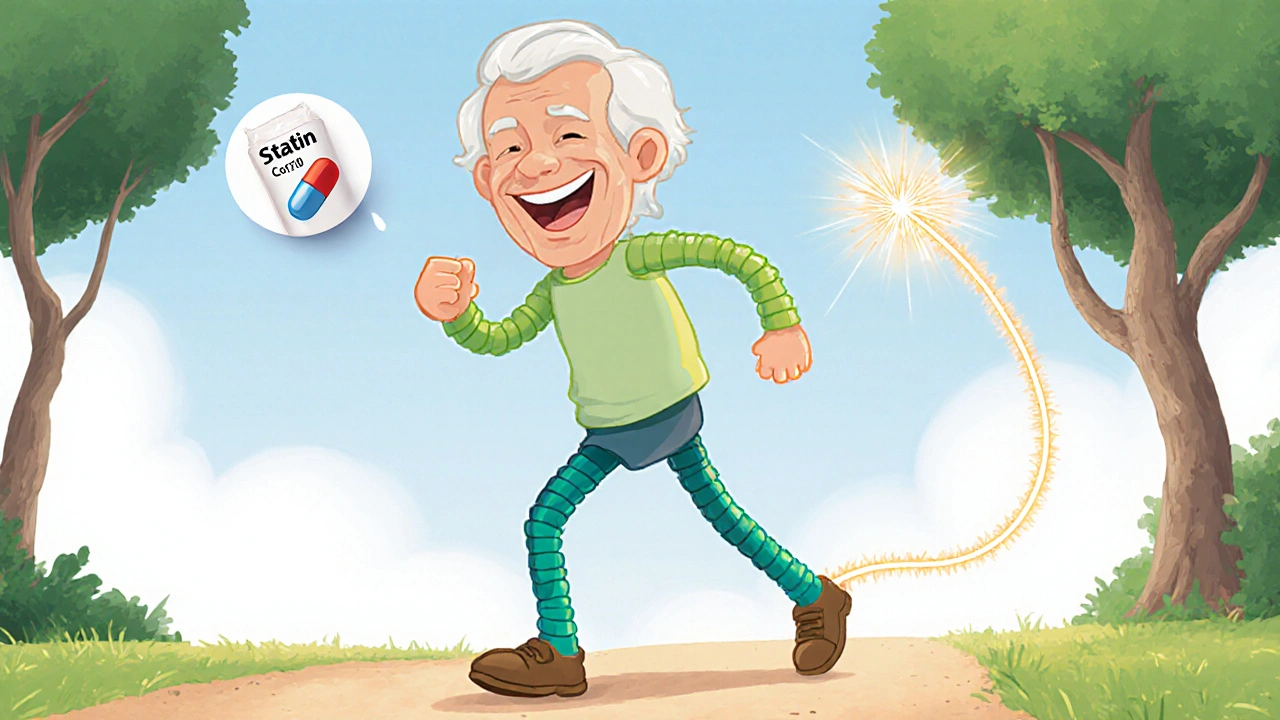Statins and Workout: What You Need to Know Before You Lift
When you're taking statins, cholesterol-lowering drugs prescribed to reduce heart attack and stroke risk. Also known as HMG-CoA reductase inhibitors, they're one of the most common medications worldwide for managing high LDL cholesterol. But if you're active—whether you lift weights, run, or just walk daily—you’ve probably noticed something off. Muscle aches. Fatigue. Or maybe you just feel like your gains have stalled. You’re not imagining it. Statins and workout don’t always play nice, and knowing why matters more than ever.
The biggest issue? muscle pain, a common side effect that can range from mild soreness to debilitating weakness. It’s not just being out of shape. Statins interfere with the production of coenzyme Q10, a compound your muscles need to make energy. Without enough of it, your cells struggle to recover after exercise. That’s why some people feel like they’re running on empty after a workout, even if they used to bounce back fast. And it’s not just older adults—active people in their 30s and 40s on statins report this too. If you’re lifting and suddenly can’t do what you used to, it might not be aging. It might be your meds.
Then there’s the cholesterol, the very thing statins are meant to control. While lowering it protects your heart, completely shutting down its production isn’t harmless. Cholesterol isn’t just a villain—it’s a building block for hormones, cell membranes, and even vitamin D. If you’re working out hard, your body needs it to repair muscle tissue and keep your endocrine system balanced. Too little can mean slower recovery, lower testosterone, and more fatigue. That’s why some people feel better switching from a high-dose statin to a lower one, or even trying a different type. It’s not about stopping the meds—it’s about finding the right balance for your lifestyle.
And here’s the thing: exercise still matters. Studies show that people on statins who stay active have better heart outcomes than those who don’t. The key is listening to your body. If your muscles feel like they’re on fire after a light jog, talk to your doctor. Don’t push through it. You might need a blood test to check for elevated creatine kinase, a sign of muscle damage. Or you might benefit from coenzyme Q10 supplements—some research suggests they help reduce statin-related muscle pain without affecting cholesterol control.
Don’t assume you have to choose between a healthy heart and a strong body. Many people on statins still build muscle, run marathons, and stay active into their 70s. It’s just not one-size-fits-all. What works for someone else might not work for you. That’s why you’ll find real stories, expert advice, and direct comparisons in the posts below—from how different statins affect workouts, to what supplements help, to when it’s time to ask for a change. This isn’t about avoiding exercise. It’s about doing it smarter while you manage your health.

Statins and Exercise-Induced Muscle Injury: Prevention Tips
Haig Sandavol Nov 13 10Learn how to exercise safely while taking statins. Discover science-backed tips to prevent muscle pain, which statins are gentler on muscles, and how to stay active without risking injury.
More Detail